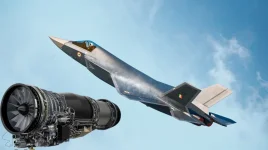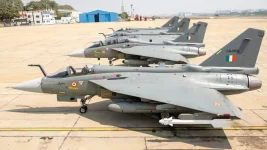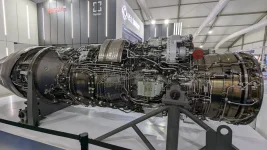- Views: 2K
- Replies: 9
The recent unveiling of China's sixth-generation stealth fighter jet, featuring an unusual trijet engine configuration, has sparked debate among defence analysts regarding the progress of China's high-thrust jet engine technology. Experts suggest this design choice reflects ongoing challenges in developing engines with sufficient thrust for a strike-optimized stealth fighter-bomber.
Analysts find the trijet configuration unusual for a modern stealth platform, where twin-engine designs are generally preferred for their efficiency and streamlined stealth profiles. This suggests that the WS-10C engines currently used by China are unable to deliver the necessary thrust for a twin-engine configuration, forcing a compromise in design.
For comparison, the Pratt & Whitney F135, which powers the Lockheed Martin F-35 Lightning II, generates a maximum thrust of 181 kN. The B-21 Raider, a stealth bomber unveiled by the United States, employs two F135-like engines with ample combined thrust for its maximum takeoff weight (MTOW) of 81,647 kg.
Based on the trijet design, analysts estimate that the Chinese stealth fighter-bomber has an MTOW of approximately 50,000 kg, significantly lower than the B-21 Raider. This suggests the aircraft is optimized for shorter strike missions with a more limited payload.
The use of three engines instead of two indicates that China has not yet mastered the development of engines with a thrust range of 150-180 kN, crucial for powering larger, more versatile stealth aircraft.
While the trijet design compensates for this engine limitation, it likely comes at the cost of reduced stealth capabilities. A trijet configuration introduces additional exhaust signatures, potentially compromising the aircraft's overall stealth compared to twin-engine designs. Additionally, it may lead to higher maintenance requirements and increased fuel consumption.
China's advancements in stealth technology and aerodynamics are evident in this new fighter-bomber, but the trijet design highlights a persistent weakness: jet engine development. Developing a high-thrust engine capable of powering future stealth platforms in twin-engine configurations remains a key challenge for China's aviation industry.
For India, the Chinese sixth-generation jet's trijet configuration serves as a reminder of the critical importance of indigenous engine development programs. With the AMCA (Advanced Medium Combat Aircraft) program underway, ensuring access to a high-thrust engine that meets future requirements is paramount for India's pursuit of self-reliance in defence technology.





